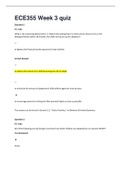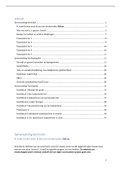Essay
Unit 10 - Investigating the Chemistry of Fire
- Institution
- PEARSON (PEARSON)
Assignment includes a practice write-up of extinction practical, heat transfer and combustion, information oof sources of ignition, the fire tetrahedron, and extinction methods. This assignment was graded as a distinction.
[Show more]












